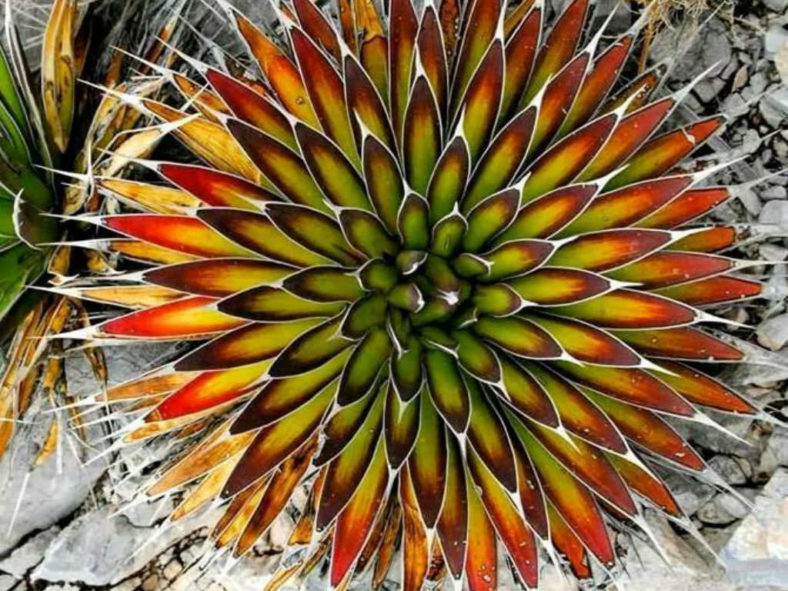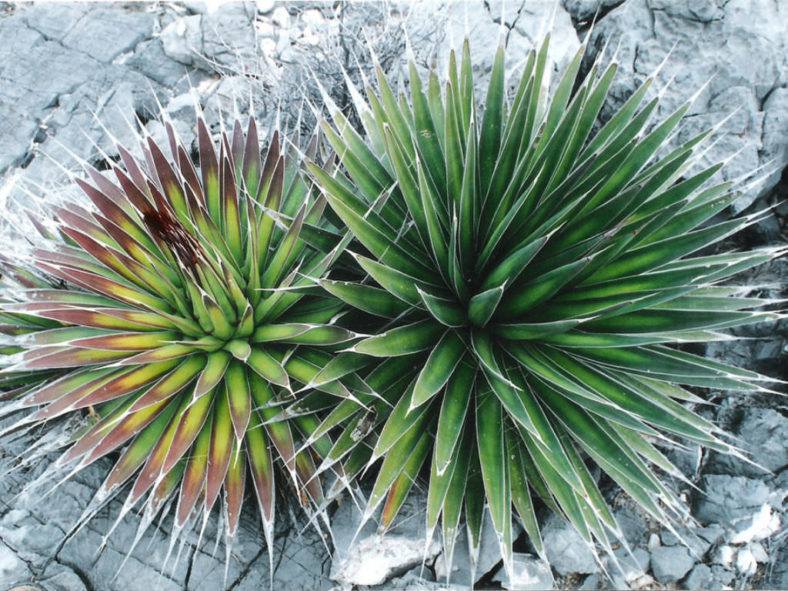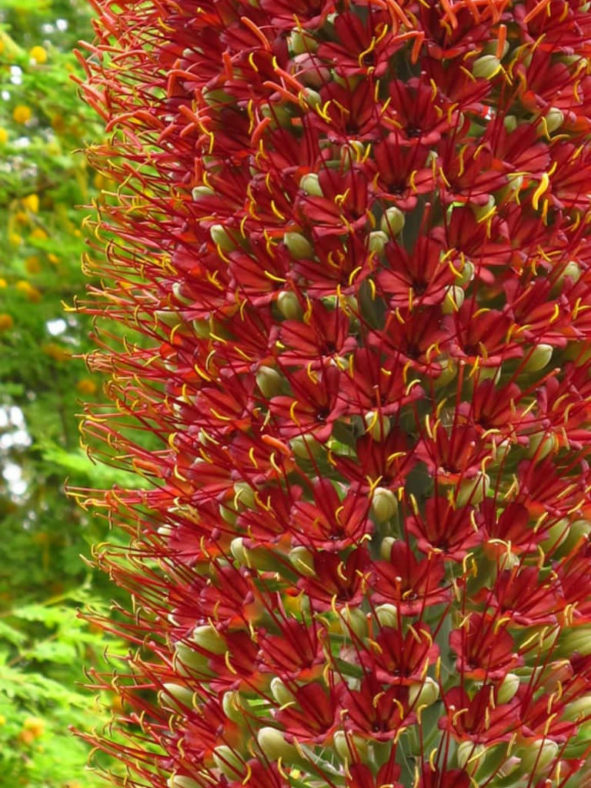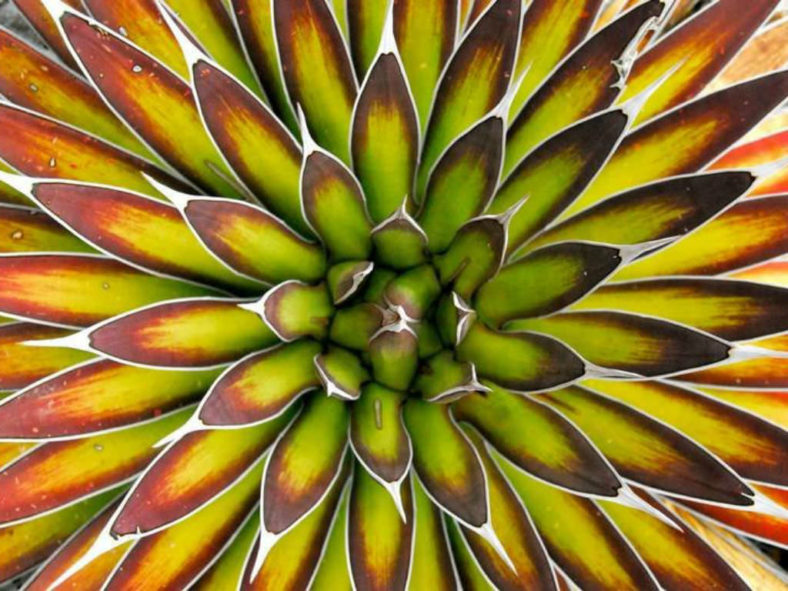Scientific Name
Agave pelona Gentry
Common Name(s)
Bald Agave, Mescal Pelón (Spanish), Mexican Agave
Scientific Classification
Family: Asparagaceae
Subfamily: Agavoideae
Genus: Agave
Etymology
The specific epithet "pelona" (pronounced "pel-OH-nuh") means "with little or no hair; bald or balding" and refers to the lack of teeth along the margins of the leaves of this species.
Origin
Agave pelona is native to Mexico. It occurs on the steep sides and tops of ridges only in three small mountain ranges of extremely arid northwestern Sonora.
Description
Agave pelona is a stunning succulent that forms a dense rosette of narrow, glossy green leaves, often tinged with red. It is similar in size and coloration to Agave ocahui. The solitary rosette can slowly grow, reaching a diameter of up to 3 feet (90 cm). The leaves are stiff and have white, toothless margins and a reddish terminal spine, measuring up to 18 inches (45 cm) in length and 2 inches (5 cm) in width. The terminal spine can grow up to 3 inches (7.5 cm) long.
Once in its lifetime, typically in early spring through summer, Agave pelona produces a tall flower spike with striking, deep reddish-purple, bell-shaped flowers. The flower spike can reach a height of up to 10 feet (3 m).

How to Grow and Care for Agave pelona
Hardiness: USDA hardiness zones 9a to 11b: from 20°F (-6.7°C) to 50°F (10°C).
Agaves are not difficult plants to grow. They are slow-growing and dramatic and will even thrive on a bit of neglect. If you are the type of person who likes to fuss with houseplants and water a lot, Agave is probably not the plant for you. On the other hand, if you are the type of person who likes to set it and forget it, and you have a sunny window, Agave might be the way to go. Be aware that some large varieties will eventually outgrow your room (unless you have a large greenhouse), and Agave can be aggressive. They have irritating sap and sometimes very sharp thorns that can cause injuries to small children and even pets.
Generally, Agaves do not require repotting annually. Most species commonly found in cultivation grow slowly and take a long time to outgrow their pot. It is also best to handle your plants as little as possible since they do not like to be disturbed. When repot, refresh the spent soil with a new potting mix and ensure the plant is firmly anchored in its pot. However, be careful not to pot the Agave too deeply, as that will encourage stem rot during the growing season.
Learn more at How to Grow and Care for Agave.
Links
- Back to genus Agave
- Succupedia: Browse succulents by Scientific Name, Common Name, Genus, Family, USDA Hardiness Zone, Origin, or cacti by Genus
Photo Gallery
Click on a photo to see a larger version.


